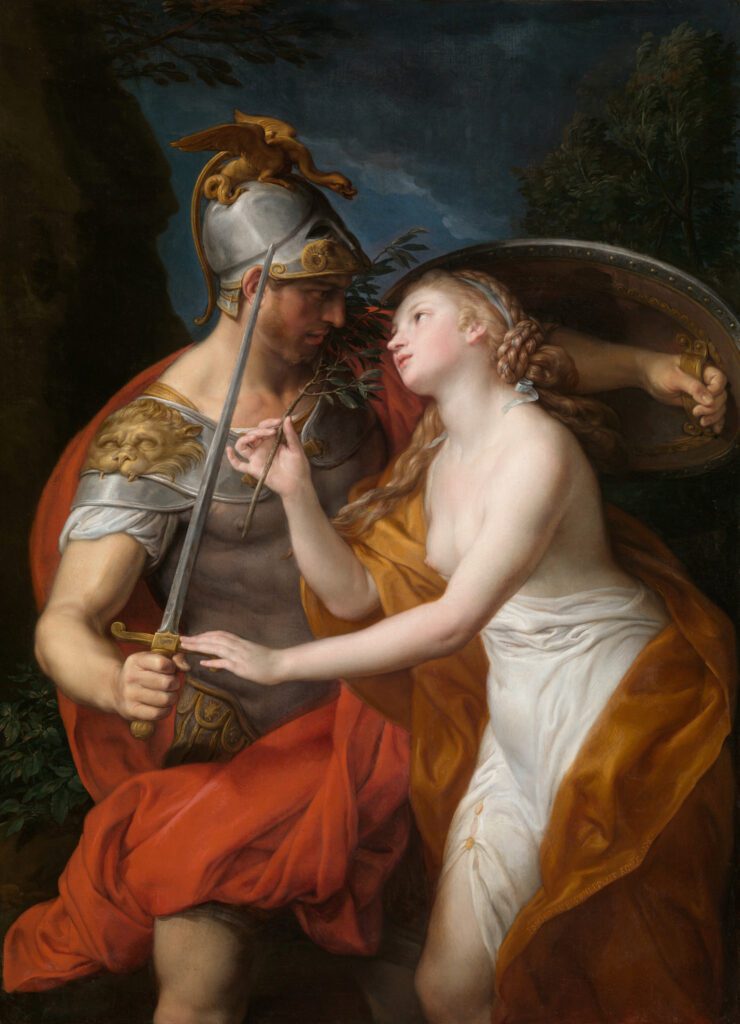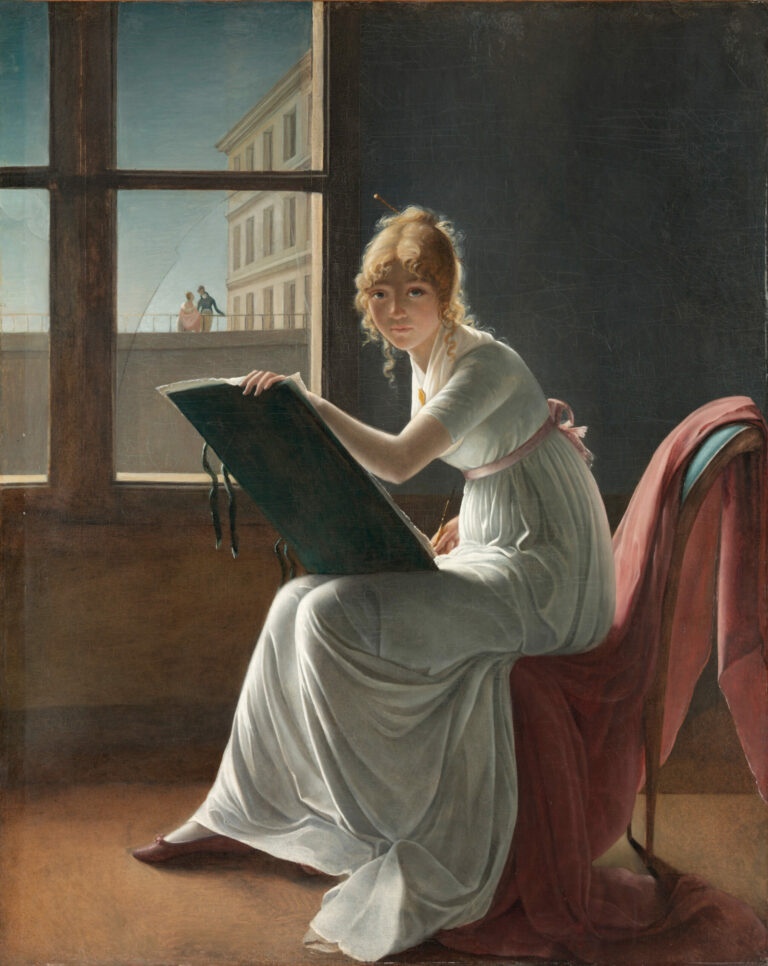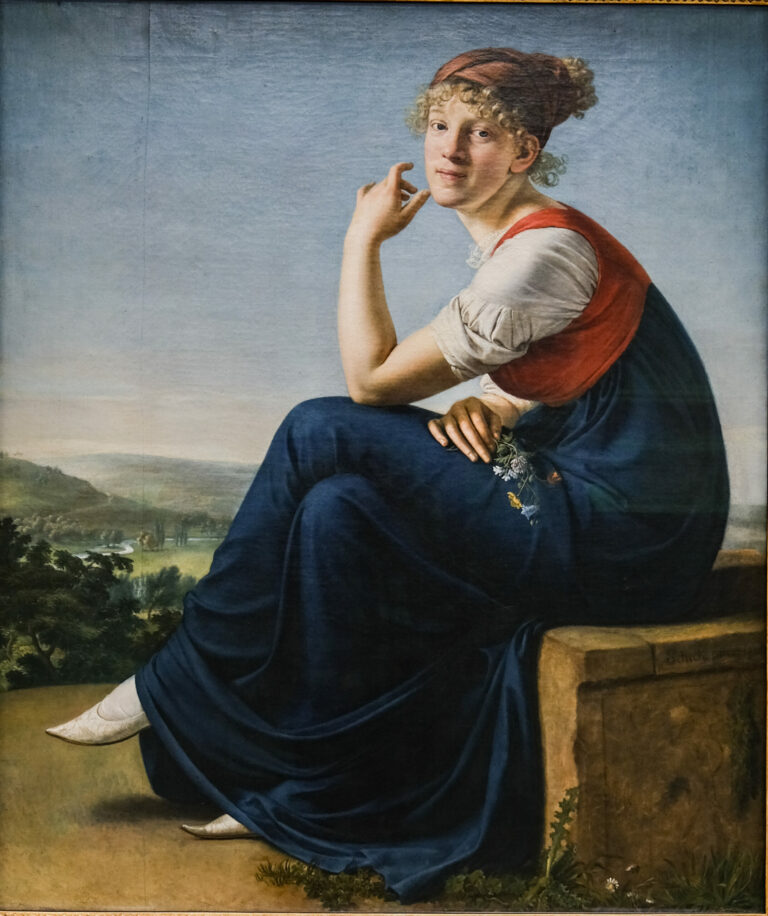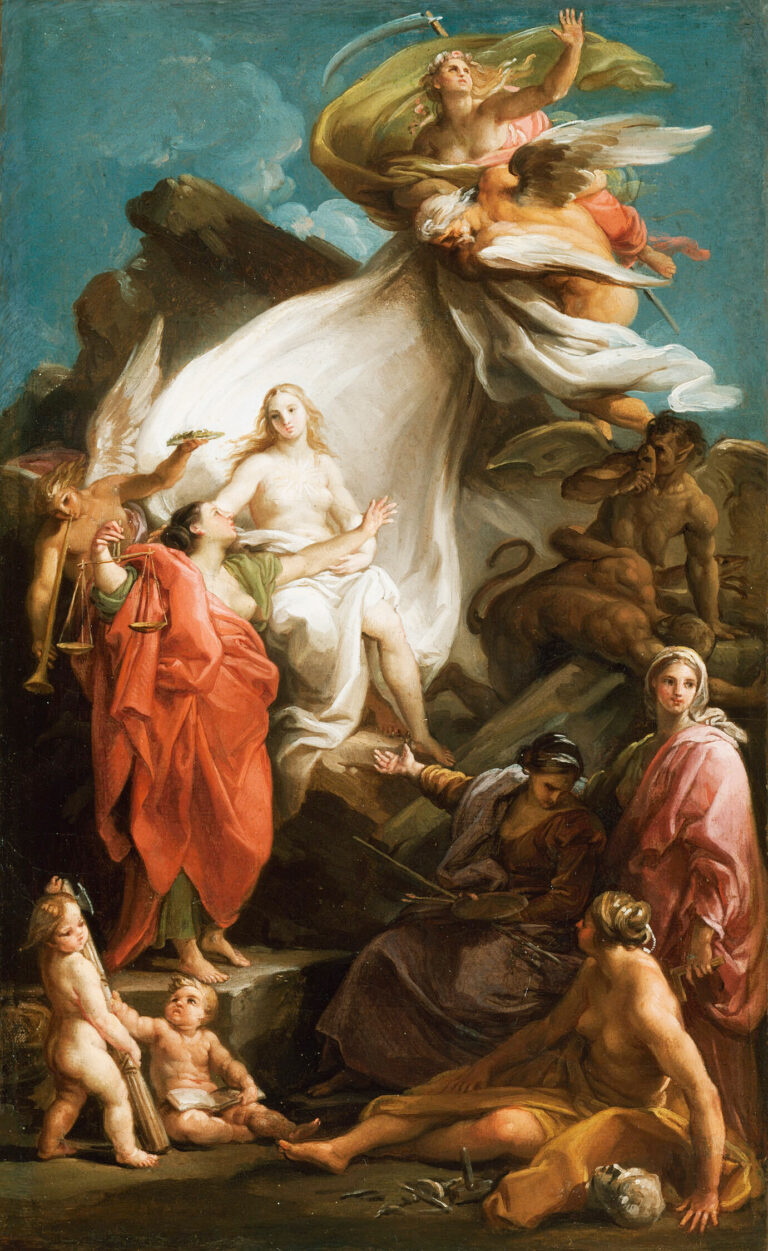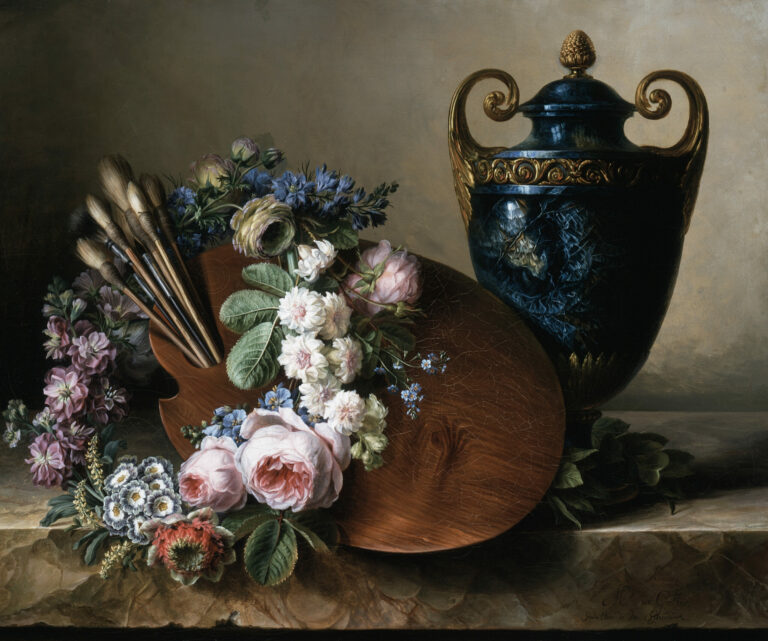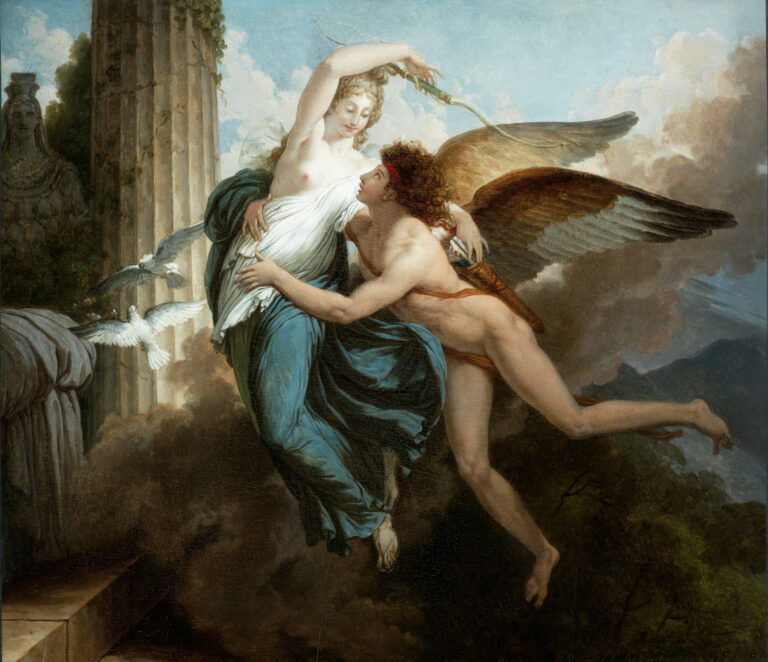This work immerses us in an allegorical dialogue of great intensity. In a theatrical setting, Batoni orchestrates the encounter between Mars, god of war, and a female figure embodying Peace.
The warrior, adorned with an ornate helmet and finely chiseled armor, finds himself captivated by the luminous presence of Peace. The latter, with a gesture both delicate and resolute, extends an olive branch while seeming to restrain his sword.
The sumptuous draperies – blood red for Mars, gold and immaculate white for Peace – create a chromatic tension that elevates the composition. The turbulent background, with its stormy sky and lush vegetation, accentuates the emotional charge of this confrontation between two antagonistic forces. Batoni’s technical mastery is particularly evident in the rendering of the flesh tones and the interplay of light that models the bodies with a distinctly neoclassical sensuality.
For further exploration:
- Allegory of Peace and War, by Pompeo Girolamo Batoni, 1776
- 136 × 99 cm
- The Art Institute of Chicago, European Paintings and Sculptures, Gallery 218
- https://www.artic.edu/artworks/149778/allegory-of-peace-and-war
Pompeo Girolamo Batoni (1708-1787) established himself as the most influential Roman painter of the 18th century. A virtuoso portraitist, he built a prestigious international clientele, particularly among British aristocrats on their Grand Tour.
This painting, created on his own initiative without commission, demonstrates his creative freedom and ability to merge the artistic trends of his time. The work perfectly illustrates his pivotal position between rococo refinement and emerging neoclassical rigor, an alliance that defined the uniqueness of his style. His exemplary technical mastery and acute sense of composition earned him unanimous recognition, making him the Italian rival of Anton Raphael Mengs and an heir to the great masters of the Renaissance.

